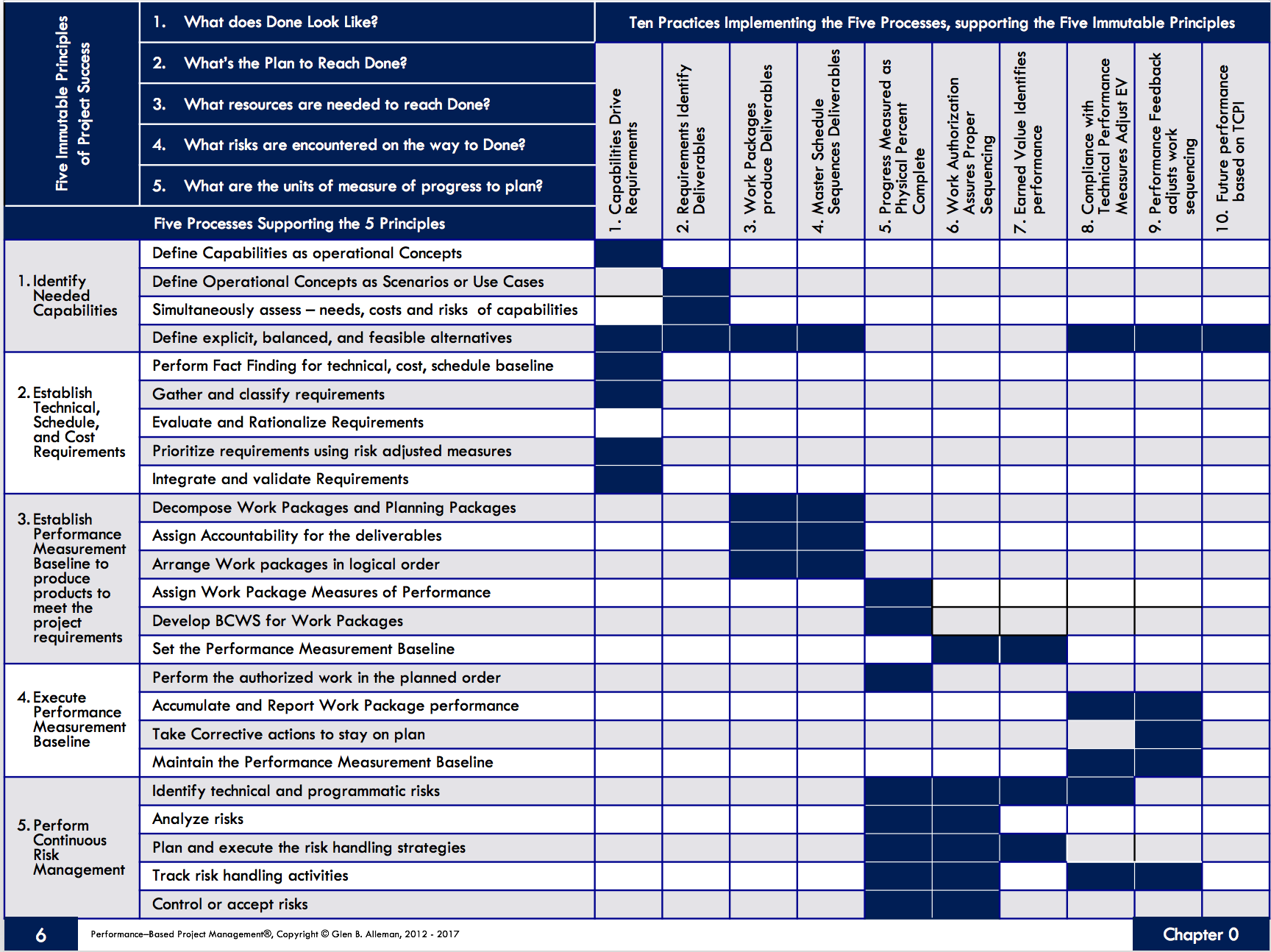![]()
With Done defined in units of Effectiveness (MOE) and Performance (MOP). With a plan for reaching Done at the needed time, for the needed budget, with the needed capabilities. With the risks mitigated or margin in place to increase the probability of success to arriving at Done, what we need now is the means to measure progress toward Done.
But before we can have a useful measure of progress to plan, we need a target for that performance. This was done in the first and second principle. What does Done look like in units of measure meaningful to the decision makers? Only by defining these targets up front can we use them to measure our progress.

From our first Principle, the meaningful measures progress to plan start with the MoE’s that tell us what the customer thinks Done looks like in their units. The MoP’s characterize physical or functional attributes relating to the system operation that the customer agrees is critical to the system’s success and will be implemented by the provider. MoP’s tell us what the system needs to achieve in order to meet the MoE’s. Certain MoP’s are critical enough to program success that they are labeled Key Performance Parameters (KPP). All performance measures must be translated to the language of the engineer so progress can be measured. Technical Performance Measures (TPM) represent that translation.
These Technical Performance Measurements take place within a performance measurement system to provide decision makers with specific performance information of physical progress and budget expenditures compared to the execution plan.
Physical percent complete requires tangible evidence, not the usual tap dancing assessment of “done-ness” we see many times. Physical percent complete means directly linking cost, schedule, and performance. It is an objective measure, with tangible evidence of progress. We’ve all had the experience of a control account manager (e.g. the lowest practical level of management control) determining the percent complete by eyeballing the work effort. This assessment often differs from what is actually being performed on the program for the same work.
This disconnect between the reported measures of progress and the actual measures of “done-ness” is a clear sign that program performance measurement gaps are going to materialize before the Program Manager can take corrective action.
This completes the quick survey of the Five Immutable Principles of Project Success.
The next series of posts will put these principles to work along with the Processes and Practices, so success can start to be achieved. All these moving parts are connected in the following way…

Glen Allenman is part of the GovLoop Featured Blogger program, where we feature blog posts by government voices from all across the country (and world!). To see more Featured Blogger posts, click here.





Leave a Reply
You must be logged in to post a comment.